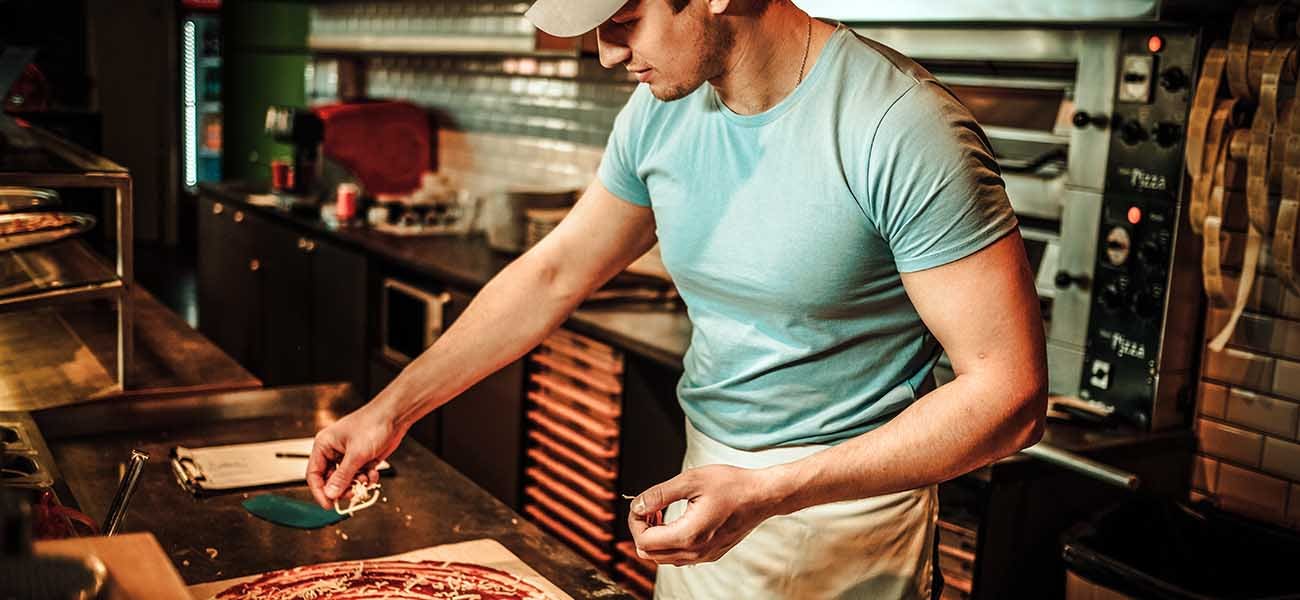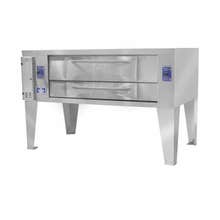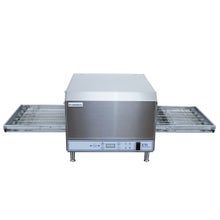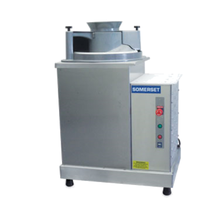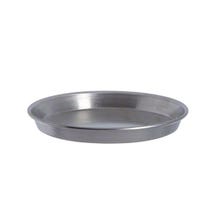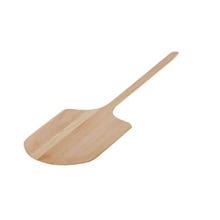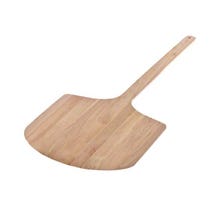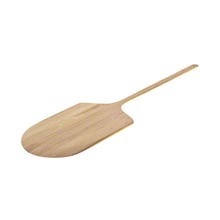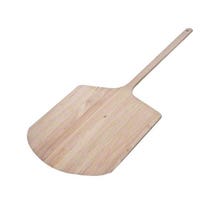How to Open a Successful Pizza Restaurant: 10 Things to Consider
By: Matthew Berry • Feb. 21, 2023 • 17 minute read time
How to Open a Successful Pizza Restaurant: 10 Things to Consider
Opening your own pizzeria can be rewarding in many ways; however, getting started can seem intimidating, with so many things to consider. Before opening your new pizza shop, let's discuss some key aspects you may want to consider.
- Location—You've heard it before, but we'll repeat it: Location is critical to the success of your pizza restaurant or any business. Consider factors like foot traffic, competition, local regulations, and proximity to potential customers.
- Menu—Determine the menu offerings, trends, pricing, and target demographic. It's important to understand the demand for different types of pizza and the variety of options that will appeal to a wide range of customers.
- Licenses and permits—Obtain all necessary licenses, permits, and certifications to operate your pizza restaurant and avoid being fined or forced to close.
- Kitchen Equipment—Find the highest quality, reliable equipment and supplies that fit your budget.
- Staff—The people who work in a small business are the most important part. Hire experienced and skilled employees, including chefs, servers, and managers.
- Delivery & Takeout Services—Customers have become more fond of delivery and takeout than ever before. Consider if your new pizza restaurant should offer delivery and takeout.
- Marketing and Promotion—Develop a marketing and promotion plan to attract customers to your new pizza place.
- Finances—Develop a detailed budget and secure sufficient funding to start and maintain your pizza business.
- Competition—Research and understand the competition in the area for pizza restaurants.
- Customer Experience—Ensure your pizza restaurant has a welcoming atmosphere and provides excellent customer service.
Selecting a Location for your pizza restaurant
Selling pizza can be a dream come true for many small business owners.
One of the biggest reasons pizza businesses don't succeed is location. In an increasingly competitive and value-oriented market, having outstanding customer service and great food isn't good enough. For a pizzeria to compete at the highest level, you need to have a "home run" location. To find the perfect spot for a pizzeria, you must commit to research. You need to talk with many people — especially local business owners. Doing your homework is essential. While you're researching, keep the following in mind:
- Demographics—Choose a location near a residential area with a large population of potential customers.
- Accessibility—The location should be easily accessible and visible to potential customers, with adequate parking.
- Foot Traffic—Look for a location with high foot traffic, such as a busy street or shopping center.
- Rent and Lease Terms—Consider the rent and lease terms and negotiate a favorable lease agreement.
- Competition—Research the competition in the area and choose a location with little competition but where demand for pizza exists.
- Zoning Laws—Ensure the location complies with local zoning laws and regulations.
- Parking—Ensure there is adequate parking for customers, especially if the restaurant offers dine-in service.
- Traffic Flow—Consider the flow of foot and vehicle traffic in the area and choose a convenient location for customers.
- Visibility—Look for a location with good visibility from the street and easy access for your vendors' delivery vehicles.
- Future Development—Consider future developments in the area, such as new residential or commercial developments, that may impact the restaurant's success.
Choose the right menu offerings
Outlining an overall theme for your pizza menu can help guide you through many of the processes and questions you need to answer.
Research the different types of pizzas and other menu items that are popular with your target customer. Do you plan to stick with serving pizza only? What other types of menu items like calzones, salads, and sandwiches should you include? Do you plan to serve other dishes like pasta, breadsticks, or desserts? How about beverage options? Do you plan to offer a kids' menu?
You can develop the best possible menu for you and your customers by answering the preceding questions.
Keep in mind that by limiting the menu, you can reduce the variety of raw ingredients required, increase your kitchen staff's efficiency and, at the same time, help your customers to make quick decisions.
Apply for licenses and permits to open your pizza restaurant
The types of licenses and permits you'll need to open a pizzeria depend on your location. The process can be complex to navigate. We've listed some of the most common licenses and permits below. Be sure to consult with your local health department and government entities or a local business attorney to make sure you have everything you need to operate safely and legally.
- Business license—A business license is required to legally operate a business in most areas.
- Food service permit—Serving food in your pizzeria means you'll need a food service permit.
- Health department permit—A health department permit is required for all food service establishments.
- Occupancy permit—Your building may need to be inspected by your local fire department to make sure it is safe to be occupied.
- Building and construction permit—You'll probably need a permit if you plan to renovate, remodel, or build anything else.
- Tax ID number—You'll need a tax ID number to pay taxes and report income. Your employees will also need it to file their taxes.
Making the right decision on Kitchen Equipment for your Pizza Restaurant
To make the right decisions on kitchen equipment for your pizza shop, consider the following:
- Research—Research and compare different kitchen equipment brands and models to determine which are the most reliable and suitable for your needs.
- Pizza Equipment—Invest in high-quality pizza ovens, mixers, refrigerators, and other equipment specific to pizza making. Think about the other equipment you'll need for non-pizza items that aren't pizza, like mozzarella sticks, fried pickles, and french fries. Deep fryers, ranges, and other cooking equipment are needed to make those items. Think about warming equipment. You'll need to keep orders at an appropriate temperature before they're taken to the table, delivered, or picked up.
- Brand Reputation—Choose equipment from reputable brands with a proven track record of quality and reliability.
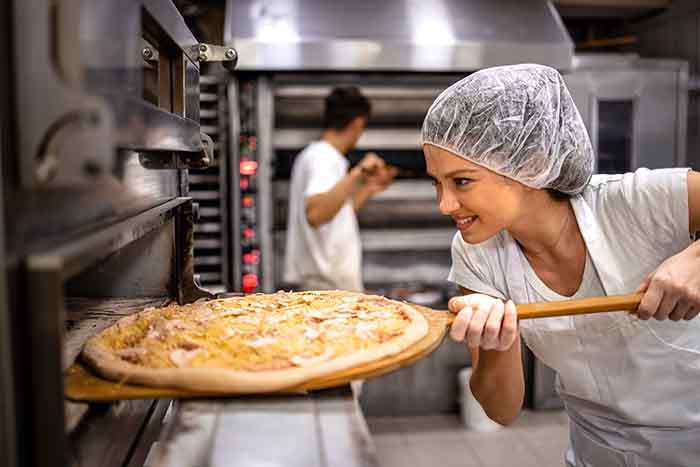

- Energy Efficiency—Look for equipment that is energy efficient to reduce energy costs and help the environment.
- Maintenance—Consider the maintenance requirements of the equipment and ensure that adequate resources are available for ongoing maintenance.
- Space—Ensure the kitchen equipment fits in the space available, and plan for adequate space for food preparation and storage.
- Cost—Balance the cost of the equipment with its quality, reliability, and expected lifespan.
- Warranty—Look for equipment with a warranty for peace of mind and protection against unexpected repairs or replacements, or purchase an extended warranty if one is offered.
- Future Needs—Consider future needs and choose equipment that can be easily expanded or upgraded as the restaurant grows.
- Professional Advice—Consult with kitchen equipment professionals, such as suppliers and chefs, to make informed decisions.
Create a list of all the equipment and supplies you need. Think about your menu and any special or seasonal items you want to offer. Think about everything from forks and napkins at the tables to pizza pans and pizza wheels. Don't forget about the dish pit and storage room.
How to staff your pizzeria for success
Hiring the best staff for your pizzeria is essential to the success of your business. Here are some tips on recruiting and hiring the best possible team. By following best practices like those listed below, you can create a solid and effective staff that provides excellent customer service that will contribute to a successful pizzeria.
- Create detailed job descriptions—Write clear, detailed job descriptions for each position, including the job duties, required qualifications, and expected hours. This will help you attract the right candidates and ensure they understand the expectations of the job.
- Advertise in the right places—Post job openings where potential candidates are likely to see them, such as online job boards, social media, and local newspapers. Consider reaching out to culinary schools or community job placement services.
- Screen resumes—Review resumes carefully to identify candidates with the required skills and experience. Look for candidates who have a passion for food and a strong work ethic.
- Conduct thorough interviews—Conduct in-depth interviews with each candidate to assess their skills, experience, and fit with your team. Ask open-ended questions that allow candidates to showcase their problem-solving skills and critical-thinking abilities.
- Competitive compensation and benefits—To attract and retain top talent, offer competitive compensation and benefits. These should include a competitive hourly wage, health insurance, paid time off, and other perks.
Remember to consider the culture and values of your pizzeria when hiring new staff. You want to ensure they fit in well with your team and share your passion for food and customer service. By following these tips, you can recruit and hire the best possible staff for your pizzeria.
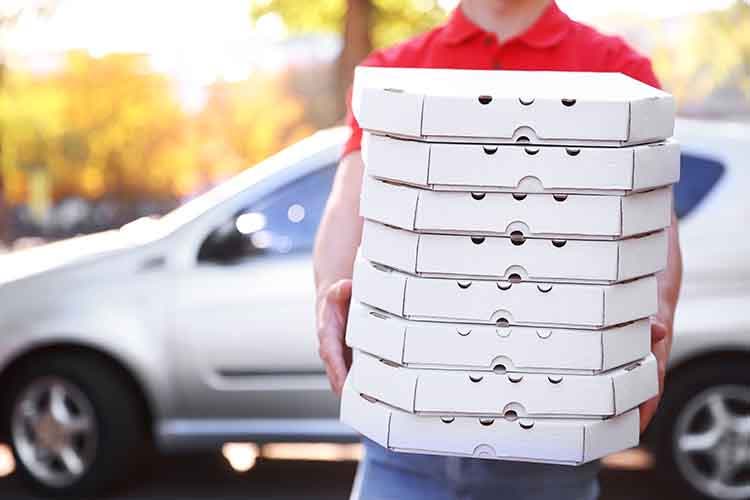

What about delivery and takeout services for your pizzeria
Offering delivery and takeout options in your pizzeria will help you increase your revenue. To determine the right options to offer, consider the following:
- Market Research—Conduct market research to understand the demand for delivery and takeout services in your area.
- Customer Needs—Understand the needs of your target demographic and what types of delivery and takeout services they prefer.
- Competition—Research the competition and the delivery and takeout services they offer, and identify opportunities to differentiate your offering.
- Logistics—Evaluate the logistics of offering delivery and takeout services, including the cost of delivery vehicles and staffing and the potential impact on in-store operations.
- Technology—Invest in technology, such as online ordering systems and mobile apps, to make the delivery and takeout process more efficient and convenient for customers.
- Menu Offerings—Consider offering menu items that are suitable for delivery and takeout, such as pizzas, salads, and sides.
- Marketing—Promote delivery and takeout services through advertising, social media, and in-store promotions to attract customers.
- Packaging—Invest in high-quality packaging that will keep the food hot and fresh during delivery.
- Delivery Areas—Determine the delivery areas, and adjust the delivery radius based on the restaurant's capacity and demand.
- Customer Feedback—Continuously gather customer feedback to improve the delivery and takeout experience and increase customer satisfaction.
Market and promote your new pizzeria to find customers
Now that you have your location, menu, and equipment planning in the works, it's time to think about how to let the community know you're opening!
Here are some marketing and promotion strategies to consider:
- Create a social media presence—Social media is an excellent platform to showcase your brand and reach a broad audience. You can create accounts on platforms like Facebook, Instagram, and Twitter and share pictures of your pizzas, promotions, and events.
- Launch a website—A website is crucial for any restaurant, especially a pizzeria. It allows potential customers to learn more about your menu, location, hours of operation, and contact information. It also allows you to offer online ordering.
- Offer promotions and discounts—People love a good deal, and offering discounts and promotions can help attract new customers to your restaurant. For example, you can offer a discount on the first order, a free topping, or a free drink with the purchase of a pizza.
- Host events—Hosting events is an excellent way to attract customers to your restaurant. You can host a pizza-making workshop, a pizza-eating contest, or a fundraiser for a local charity.
- Partner with local businesses—Partnering with local businesses can help you expand your reach and attract new customers. For example, you can offer a discount to customers who show a receipt from a local business or partner with a local brewery to offer pizza and beer specials.
- Use email marketing—Email marketing is an effective way to reach out to customers and promote your restaurant. You can use email marketing to send promotions, menu updates, and special events.
- Optimize your search engine presence—Ensure your restaurant is visible in search engine results by optimizing your website for search engines. This includes using relevant keywords, creating quality content, and building high-quality backlinks.
Remember, consistency and engagement with your audience are key to successful marketing and promotion. By implementing these strategies, you can increase brand awareness, attract new customers, and build a loyal following for your pizza restaurant.
Develop a financial plan for your new pizzeria
Financial planning is important for any entrepreneur who wants to start a successful pizza restaurant. By creating a solid financial plan, you can increase your chances of success and avoid many pitfalls that can derail a new business.
Here are some steps you can take to plan financially for your new venture:
- Create a detailed business plan—A well-written business plan will help you identify your target market, competition, and potential revenue streams. It should also include a comprehensive financial plan that outlines your start-up costs, operational expenses, and projected revenue.
- Determine your start-up costs—Make a list of all the expenses you will incur to get your pizza restaurant up and running. This includes everything from leasing a location and purchasing equipment to hiring staff and advertising your business.
- Secure financing—Once you clearly understand your start-up costs, you can explore financing options. This may include loans from banks, investments from friends and family, or crowdfunding campaigns.


- Set a budget—It is essential to create a budget for your pizza restaurant that covers all expenses, including rent, utilities, labor costs, ingredients, and marketing. Make sure you factor in any unexpected costs or contingencies.
- Forecast your revenue—Based on your business plan and market research, project your potential revenue for the first year of operations. This will help you determine your business's viability and identify areas where you need to make adjustments.
- Monitor your finances regularly—Once your pizza restaurant is up and running, it is essential to monitor your finances regularly to ensure you stay on track. Use accounting software to track expenses and revenue and adjust your budget.
By following these steps, you can plan financially for your new pizza restaurant and increase your chances of success.
Check out your competition in the area
Researching your competition is an essential step in opening a pizzeria to help you understand what you're up against. Here are some steps you can take to research your competition in the area:
- Identify your competitors—Make a list of all the pizzerias in the area. You can do this by conducting an online search, using local business directories, and checking with the local chamber of commerce.
- Visit their websites—Visit the websites of each of your competitors to gather information on their menus, pricing, hours of operation, delivery options, and other important details. You can also check if they have any promotions or discounts for customers.
- Check online reviews—Look at online review platforms like Yelp or Google My Business to see what customers say about your competitors. Pay attention to common complaints or praise for specific menu items.
- Visit their locations—Visit your competitors' locations to see the quality of their food, the ambiance of the restaurant, and how they interact with their customers. Take note of what you like and don't like about their operations.
- Analyze their marketing strategies—Examine your competitors' marketing strategies. See how they promote their businesses and what tactics they use. This can give you ideas on how to market your pizzeria effectively.
- Analyze their prices—Compare your competitors' menu prices to what you plan to charge at your pizzeria. Consider whether you will need to adjust your prices based on what your competitors are charging.
By conducting a thorough analysis of your competitors, you can gain valuable insights that can help you develop a strategy to differentiate your pizzeria and stand out.
How to provide a welcoming atmosphere and excellent experience for your pizza restaurant customer
By following the tips below, you can create a welcoming atmosphere and provide excellent customer service that will keep your customers returning for more.
- Train your staff—Your staff is the face of your pizzeria, so they must be well-trained. Ensure they are knowledgeable about the menu, attentive to customer needs, and able to resolve any issues.
- Create a comfortable atmosphere—Make sure your restaurant is clean, well-lit, and has comfortable seating. Consider decorating with warm colors and adding soft lighting to create a cozy ambiance.
- Play appropriate background music—Choose music that fits the mood you want to create in your restaurant. Soft jazz or light instrumental music can be a great choice for a relaxing atmosphere.
- Offer a variety of options—Make sure you have a range of pizza options to suit different tastes and dietary restrictions. Consider offering gluten-free or vegetarian options.
- Provide excellent service. Make sure your staff greets customers warmly, takes their orders promptly, and delivers their food quickly. To show your customers you appreciate their business, offer extra touches like free breadsticks or desserts.
- Encourage customer feedback—Ask your customers for feedback on their experience and take their suggestions seriously. This will show your customers that you value their opinions and are committed to improving their experience at your pizzeria.
Good luck with your new pizzeria!
Share

